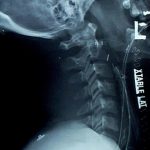Yesterday I talked about using a medical orthopaedic trauma service to provide better care to elderly patients with fractures. Many of these patients have multiple pre-existing diseases and are quite fragile. A recent paper from the Rhode Island Hospital shows just how fragile these patients may be.
Urinary tract infection (UTI) is one of the most common nosocomial infections, accounting for about 40% of all such infections. The vast majority are related to indwelling bladder catheters. It is so much of a problem that, in order to decrease federal spending in the US, Medicare now denies payment for care related to these infections.
This study looked at the relationship between UTI and bladder catheters and how this infection relates to overall mortality in older trauma patients. It was a retrospective review of 6 years of data from a single institution. After excluding patients who entered the hospital with a UTI, they found that 12% of their patients developed this infection and 72% were indeed related to catheters. Males had a significantly increasing risk of UTI with increasing age. And the risk of death from UTI increased about 7% per year after age 55.
Bottom line: Urinary tract infections are especially bad for the elderly. As part of your daily rounds on any patient, look at every tube and line and ask yourself “is that really needed any more?” If not, get rid of it before it kills your patient!
Related post:
Reference: The development of a urinary tract infection is associated with increased mortality in trauma patients. J Trauma ePub ahead of print, doi: 10.1097/TA.0b013e31821e2b8f, July 2011.

